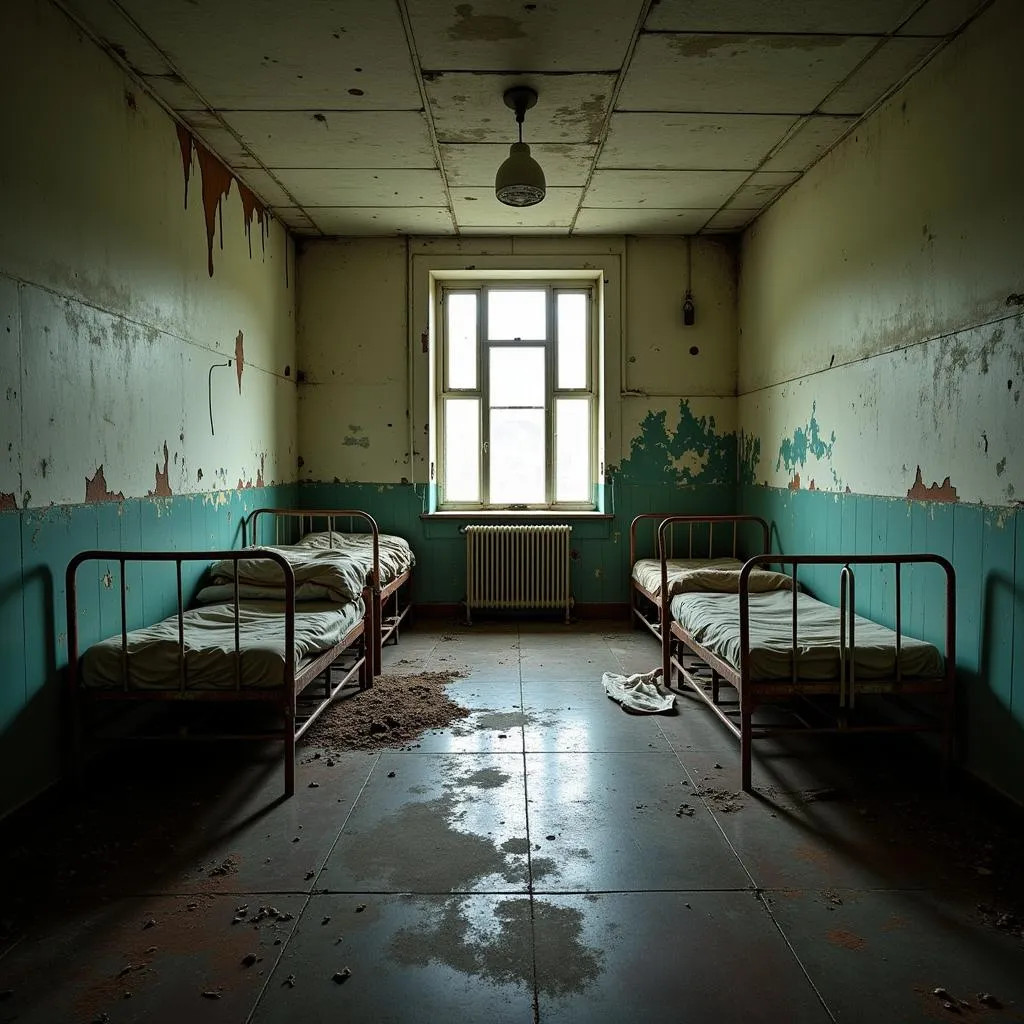Norristown State Hospital, a sprawling complex with a history spanning over a century, evokes a sense of mystery and intrigue. While it primarily served as a psychiatric facility, its imposing architecture and secluded location have sparked countless stories and rumors about its famous inmates. This article delves into the history of Norristown State Hospital, exploring the lives of some of its most notable residents and separating fact from fiction.
A Legacy Shrouded in Whispers
Established in 1879, Norristown State Hospital quickly gained a reputation as a place of both healing and confinement. Its vast grounds housed thousands of patients over the years, each with their own unique story. While the majority of individuals treated at the hospital were ordinary people battling mental illness, a few notable names have become intertwined with the institution’s lore.
Unraveling the Myths: Who Were Norristown State Hospital’s “Famous” Inmates?
The term “famous inmates” often conjures images of notorious criminals or eccentric celebrities. However, in the context of Norristown State Hospital, it’s crucial to approach this topic with sensitivity and respect. The individuals who called this place home were patients seeking treatment for mental health conditions, not objects of public fascination.
While there are no documented cases of nationally recognized figures being admitted to Norristown State Hospital, certain patients have garnered local notoriety over the years. Their stories, often passed down through generations of locals, are often shrouded in speculation and exaggeration.
 Norristown State Hospital sprawling grounds
Norristown State Hospital sprawling grounds
The Power of Storytelling: How Local Legends Shape Perception
The enduring fascination with Norristown State Hospital’s “famous inmates” speaks to the power of storytelling and the human desire to understand the unknown. The hospital, with its imposing presence and air of secrecy, has become fertile ground for local legends and ghost stories.
One such tale recounts the story of a brilliant but troubled artist who was said to have created masterpieces while a patient at the hospital. Another speaks of a former socialite who, driven to madness by a tragic love affair, became a long-term resident. These stories, while likely embellished over time, offer a glimpse into the anxieties and fascinations of the communities surrounding the hospital.
Shifting Perspectives: From “Inmates” to Patients
It’s essential to remember that the individuals who resided at Norristown State Hospital were patients, not inmates. The language we use to discuss mental health matters, and it’s crucial to move away from stigmatizing terms like “inmate” that perpetuate harmful stereotypes.
By focusing on the humanity of the individuals who sought treatment at Norristown State Hospital, we can foster a more compassionate and understanding dialogue about mental health. Instead of seeking out sensationalized stories about “famous inmates,” let’s shift our focus to advocating for improved mental health resources and support systems for all.
Conclusion: Honoring the Past, Embracing a Hopeful Future
Norristown State Hospital’s legacy is complex and multifaceted. While its history includes periods of both progress and struggle in the treatment of mental illness, it’s crucial to remember that the individuals who walked its halls were more than just patients or “inmates” – they were people with hopes, dreams, and stories of their own.
By approaching the topic of Norristown State Hospital and its former residents with sensitivity and respect, we can honor the past while working towards a future where mental health is treated with the same compassion and understanding as any other aspect of well-being.
 An abandoned ward at Norristown State Hospital
An abandoned ward at Norristown State Hospital
Frequently Asked Questions
1. Is Norristown State Hospital still operational?
No, Norristown State Hospital closed its doors in 2004.
2. What is Norristown State Hospital used for now?
The future of the Norristown State Hospital site is uncertain, with ongoing discussions about potential redevelopment plans.
3. Are there tours of Norristown State Hospital?
Due to safety concerns and the site’s uncertain future, there are currently no official tours offered.
4. Where can I learn more about the history of mental health treatment?
Numerous resources are available online and in libraries offering information about the history of mental health treatment and advocacy organizations.
5. How can I support mental health awareness and advocacy?
You can support mental health awareness by getting involved with local organizations, participating in fundraising events, and advocating for policies that promote mental well-being.
If you or someone you know needs help, please reach out. We’re available 24/7 to assist you. Call us at 02437655121, email us at [email protected], or visit us at 298 Cau Dien Street, Minh Khai Ward, Bac Tu Liem District, Hanoi, Vietnam.